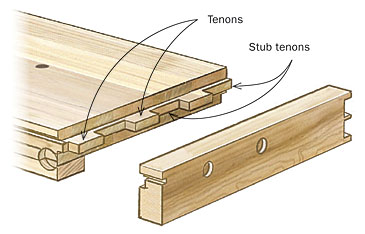Q:
In preparation for constructing a new workbench, I reviewed Garrett Hack’s article on his bench (“A Workbench 30 Years in the Making,” FWW #209). Why does he attach the breadboard with three long tenons (connected by a stub tenon)? It seems like one continuous tenon would be stronger.
John McCullum , Vancouver, WA
A:
The purpose of the breadboard end is to help hold the benchtop flat and stiff, so it needs to be strong. Using a continuous tenon to attach the breadboard actually makes it a lot weaker because you have to cut a long and deep mortise into it. And hogging out so much material doesn’t leave much to resist any flexing or movement in the top.
It’s better to use a few long tenons connected by very short tenons, known as stub tenons. This leaves more wood on the breadboard, making it stiffer. The stub tenons help keep the whole length of the breadboard and top aligned.
Fine Woodworking Recommended Products

Veritas Precision Square

Freud Super Dado Saw Blade Set 8" x 5/8" Bore

Starrett 4" Double Square























Log in or create an account to post a comment.
Sign up Log in